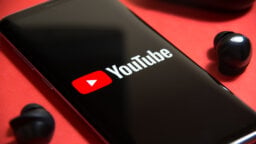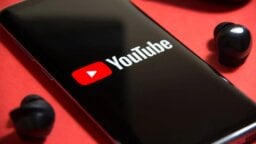This week, Lyor Cohen expressed his surprise at Warner Music’s aggrieved response to its new licensing deal with YouTube.
An internal memo, written by Warner CEO Steve Cooper and obtained by MBW, outlined a number of serious reservations – even describing how the deal was agreed under “very difficult circumstances.”
Cooper displayed particular ire for the ‘safe harbor’ laws which protect the Google/Alphabet-owned company from legal responsibility whenever its users commit copyright infringement.
It didn’t take long for Cohen, who was named Global Head of Music at YouTube last year, to respond.
In an interview with recode, he said he was encouraged by the WMG licensing negotiations, especially because the resultant new licenses will allow YouTube to grow its Red subscriptions business around the world.
“Ultimately, the key to the industry — to them, to artists — is if we can identify those consumers that are most likely to be shepherded to a higher [average revenue per user], that would be great,” Cohen said.
“We’ve talked over and over and over again how our business — I still feel part of this business — is going to return to growth by subscription and advertising, living side by side one another.”
“I didn’t hear anything about safe harbor. I do know about the numerous conversations we had about [warner] helping us, enabling us, to run this horse and to be successful.”
lyor cohen, youtube
He added: “I didn’t hear anything about safe harbor, or any of that stuff [in the Warner negotiations]… I do know about the numerous conversations we had about them helping us, enabling us, to run this horse and to be successful.
“Because they would like a company the size of Google, [with] the international breadth of the company, to get into the subscription business. I don’t think they want their revenues highly concentrated.”
Cohen then pointed to the oft-quoted $1 billion in advertising revenue that YouTube has paid to the music industry over the last 12 months – saying that the platform sees its subs business growing “faster than any subscription category ever.”
That $1bn tallies rather awkwardly with recent stats from the IFPI, showing that online video streaming services paid out $553m to labels and artists in 2016.
It’s also worth pointing out that, while YouTube has never revealed the amount of users signed up to Red, the Verge rumored that the service had just 1.5m paying subscribers by the end of last summer.
Cohen’s stance today is made particularly intriguing by the fact that, in 2009, he had a rather different point of view.
At the time, Cohen was Chairman and Chief Executive of Warner — a position he resigned from in 2012 after Len Blavatnik bought the company (and drafted Steve Cooper in as CEO).
In September 2008, Cohen’s Warner pulled out of its ongoing deal with YouTube, leaving the platform temporarily unlicensed to use the major’s content.
In an interview with Billboard magazine from January 2009, Cohen was asked to explain the reasons why WMG has decided to go cold on the service.
He said that Warner had previously “believed wholeheartedly that we needed to be the enabler”, but had recently changed its mind.
He commented: “We believe that there’s not going to be one magic solution to this but it’s important to encourage people to experiment. So we went and started being very easy to license with.
“[But] we just haven’t received enough compensation [from YouTube]. They haven’t figured out how to monetize it well enough to make our share significant enough.”
“we just haven’t received enough compensation [from youtube]. They haven’t figured out how to monetize it well enough to make our share significant enough.”
lyor cohen, warner music group, 2009
When pressed on the issue, Cohen further responded: “I think the enemy is within us, where we could allow companies to use our content to build their businesses and not compensate us fairly.
“How could we not think through all the repercussions of a deal we strike? They should fully take advantage of us if we’re willing to go for that.
“But we have a responsibility to our employees and our artists to shepherd them through this really crazy, confused time, and to pay our people and our artists and do well by everybody.”
Warner eventually put its content back on YouTube in 2009, just nine months after it had pulled its videos.
Last year, thanks to a filing at the US Copyright Office, we discovered why this U-turn came about.
WMG revealed that in the year following its YouTube blackout, it spent $2m on “largely unsuccessful” attempts to block/remove its copyright content on YouTube.
What’s more, Warner further admitted that the YouTube deal it inked in 2009 was scarcely better than the offer it rejected in 2008 for “failing to appropriately and fairly compensate recording artists”.
According to the IFPI, on-demand audio streaming services contributed $3.9bn to labels and artists in 2016, despite having a total user base of 212m people – around one fifth of the size of YouTube’s audience.Music Business Worldwide




